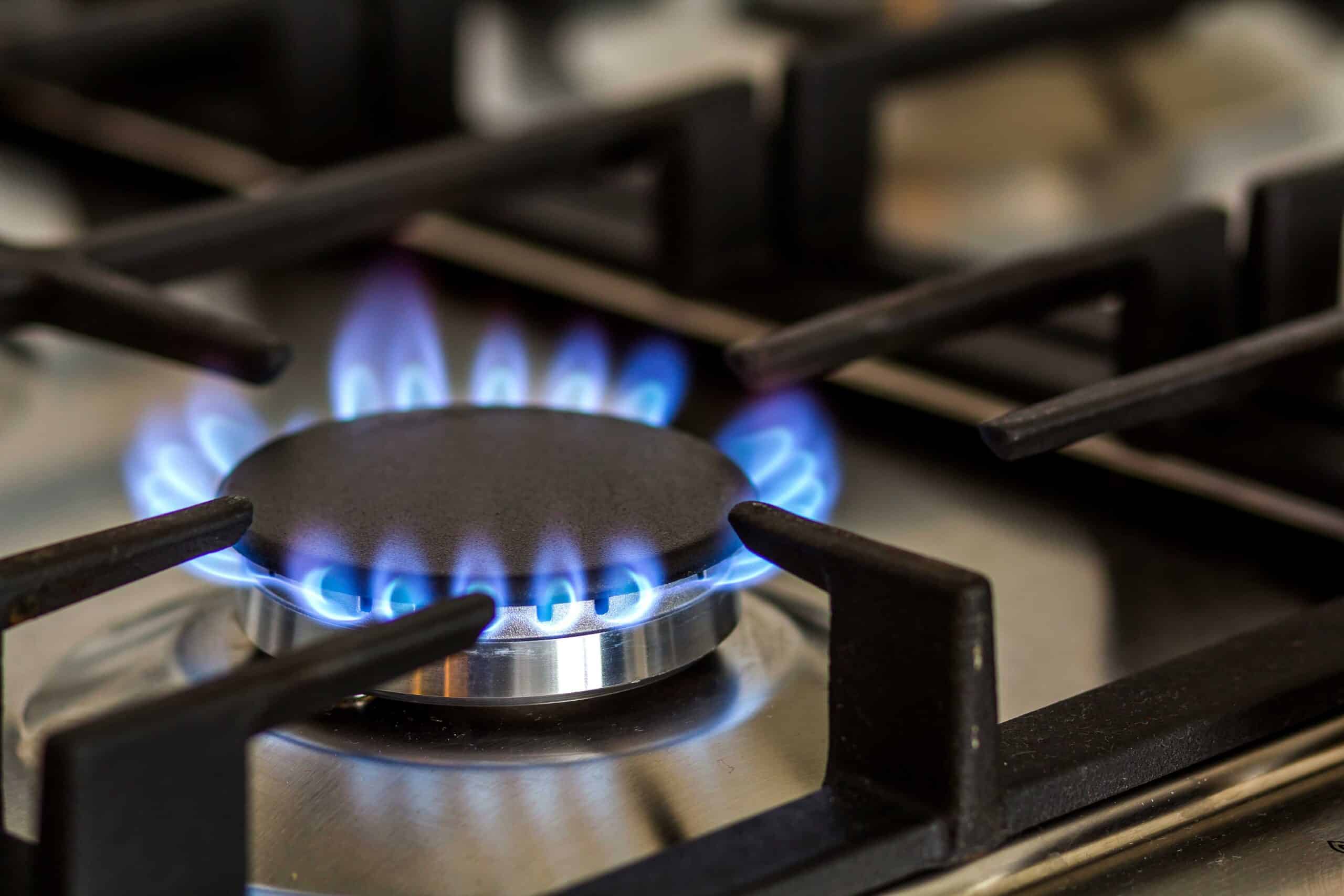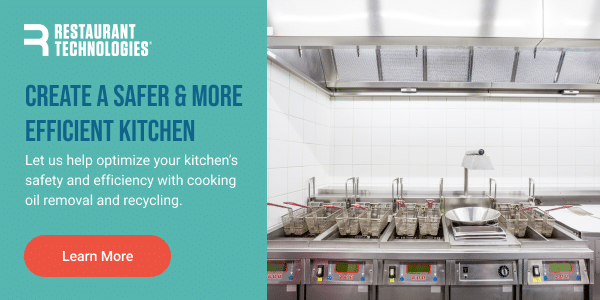
Updated March 18, 2024
Fire hazards are all too common in modern commercial kitchens. From bubbling vats of hot, flammable oil to arrays of open flames across grills and burners, there are plenty of ways for a fire to start on the line.
The National Fire Protection Association (NFPA) reveals that roughly 8,000 food service businesses report an incident of fire each year, resulting in total estimated damages of over $246 million–averaging roughly $30,750 per fire.1 By focusing on kitchen fire safety, you can avoid becoming a part of this alarming statistic.
In this guide, we’ll tally off a quick kitchen fire safety checklist to help you prevent blazes in your back-of-house. Additionally, we’ll discuss common hazards and share some key commercial kitchen fire prevention tips to keep your staff, customers, and business safe.
Fire Safety in Modern Commercial Kitchens: A Checklist
While modern restaurants benefit from strict fire codes and improved safety measures, there are still several potential hazards to look out for. The best way to prevent restaurant fires is to ensure your kitchen and staff are updated and trained with fire protection equipment. Consider investigating restaurant safety tips for useful training materials. To prepare your kitchen for a safe, fire-free service, make sure you2:
- Thoroughly inspect all fuel-burning kitchen appliances on a monthly basis
- Regularly check each cooking appliance to ensure they’re all in proper working order
- Equip all your appliances with easily removable, non-combustible grease filters
- Never place any combustible, greasy, or flammable materials in your ovens
- Empty all grease traps on a daily basis
- Install all appliances and fixtures with sufficient overhead and adjacent space to prevent overheating and burning other parts of your kitchen
- Install or update your kitchen fire suppression system
- Ensure the right portable fire extinguishers are accessible and ready
- Set up professional inspections for your exhaust system
- Test and update your fire alarm system
- Have employees go through formal fire safety training

Preparing and maintaining your kitchen equipment isn’t necessarily enough to prevent or quickly react to a spreading fire. You’ll likewise have to make sure your building also complies with local fire safety codes. Generally, this includes2:
- Having at least two points of egress from all spaces where cooking takes place
- Equipping all fire exits with panic hardware and ensuring they’re not blocked or locked
- Marking all exits with clearly visible safety signage to guide staff and guests in the event of a fire
- Installing an emergency lighting system that’s set to turn on when the smoke detector or power goes off
- Ensuring easy access to fire safety equipment
On top of preparing your equipment and building, you’ll also want your staff to be up to speed on emergency procedures so that they’re prepared for all worst-case scenarios. Decisive employee response could be the difference between a day of heavy clean-up and a truly disastrous outcome.
How Do Grease Fires Start?
A single spark or lick of a flame can cause a flare-up that, if left unchecked, can spiral into a grease fire that spreads throughout your restaurant. The NFPA estimates that almost 43% of cooking equipment fires began when the cooking material itself–commonly oil or a food product–ignited.1 Be sure to closely monitor any open flame to avoid unnecessary fire risk, and ensure staff know where the portable fire extinguisher and fire alarm are located in case a restaurant fire does start.
To prevent such issues, ensure you regularly clean every surface that may collect grease, including burners, inside appliances, counters, walls, and floors. Be prepared in case a grease fire does start by researching how to prevent burns in the kitchen.
How to Put Out a Grease Fire
If a flare-up does occur and you suddenly have a grease fire building on your stove or pan, don’t panic! Instead, remain calm and follow these critical tips to put it out before it spreads3:
- Immediately shut off the cooking appliance and all nearby gas sources
- Clear away all liquid containers to prevent spilling or splashing onto the area
- If the fire is contained to a pot or pan, quickly cover it with a tight-fitting lid to cut off the oxygen flow and put out the flames
- If the flame is relatively small but spreading past your pan, smother it with a large amount of baking soda
- If the fire is spreading well beyond your cooking vessel, quickly grab a fire extinguisher and douse the whole area
- In any event, do not throw water on a grease fire, as this actually causes the fire to spread faster
If the fire continues growing, activate fire alarms, evacuate immediately through predesignated fire doors and contact the fire department.
Ensure your staff undergo formal grease fire safety training following the above steps. A well-trained back-of-house staff can quickly respond to any surprise fires before they grow out of control and cause more damage. Following this fire safety plan can ensure your customers and employees avoid injury. Also, providing your staff with clear restaurant cleaning procedures can help prevent grease build-up and reduce fire hazards.
Simplify Restaurant Fire Safety with Restaurant Technologies
At Restaurant Technologies, we create innovative kitchen management solutions that simplify your daily operations and make your back-of-house more secure.
One of the leading sources of grease fires is fat build-up on stoves, traps, and, especially, in hood vents, which often go unchecked. Our AutoMist Restaurant Hood Cleaner for Commercial Kitchens takes all the manual work out of cleaning your hood and flue, automatically spraying down the interior of your hood to degrease the walls and clear away any build-up.
Additionally, we can help you prevent fires from another common culprit: excess cooking oil. Restaurants, especially those with a plethora of golden-brown goodies on their menu, require large amounts of oil to fuel their fryers. Used oil is difficult to properly dispose of and poses a fire hazard as it accumulates in your kitchen.
Our used cooking oil disposal team will come to your restaurant and haul off your old oil. Then, we recycle it into new, renewable fuel sources and give it a fresh lease on life. The best part? It saves you and your staff time while making your restaurant a cleaner, safer space. Consider researching how to reduce food waste in restaurants and explore other restaurant kitchen efficiency tips to further reduce your business costs.
Explore all the cutting-edge equipment and services Restaurant Technologies has to offer to safeguard your business from potential flare-ups and fires.
Sources:
- NFPA. https://www.nfpa.org/
- Philadelphia Fire Department. Restaurant Fire Safety Checklist. https://www.phila.gov/media/20180123153330/2018-Restaurant-Week-Pamphlet.pdf
- United States Consumer Product Safety Commission. Recipe for Safer Cooking. https://www.cpsc.gov/safety-education/safety-guides/home-fire/recipe-safer-cooking